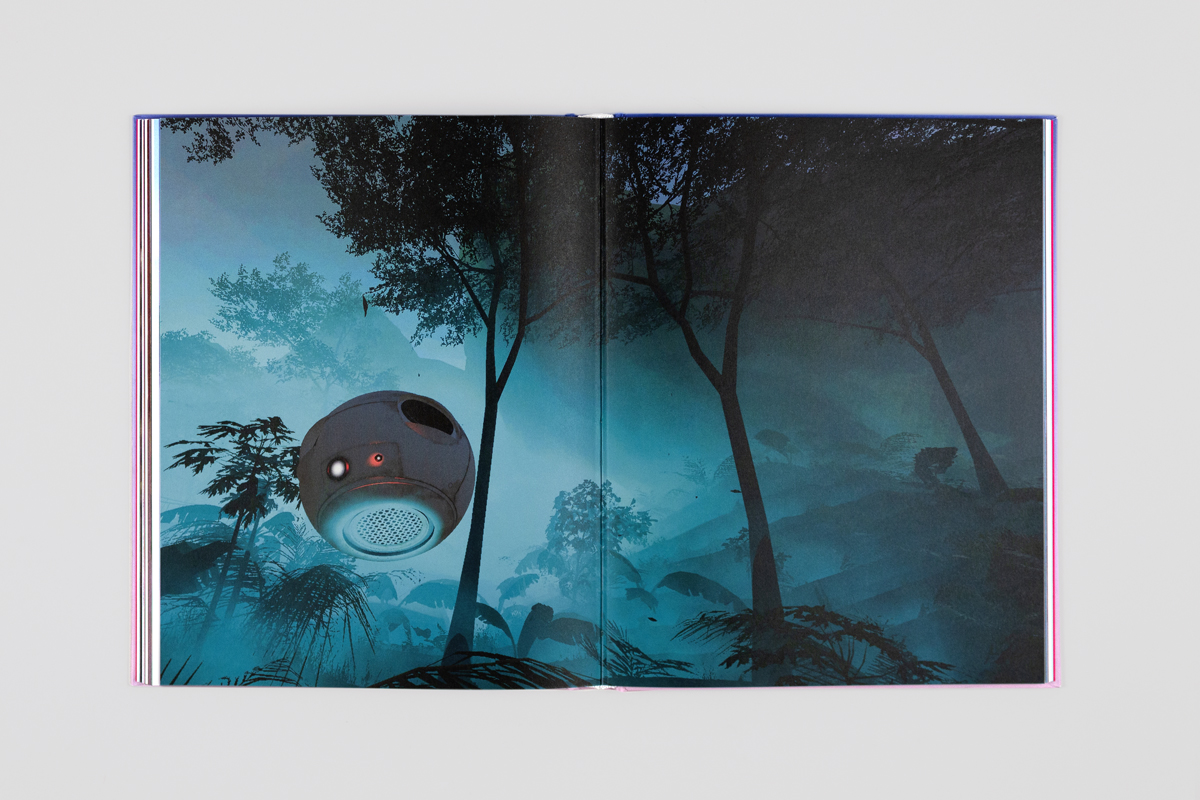Gabriel Abrantes: Programmed Melancholy
The exhibition catalogue
When Inês Grosso, the curator of Programmed Melancholy, invited me to start thinking of a book to accompany the show, I went off in a bunch of different directions. I was thinking of making an artist’s book, rather than a catalogue, that would be a vector for the show: a “how-to” book on filmmaking, a book on the making of my new horror film, or a children’s book, for example. I was trying to have the book be something more than the show, or add to the show, by offering different content that would illuminate a new, potentially less apparent, theme of the show. This impulse also arose from a desire to make a book that might hit a more emotional or exciting tonic by being less “buttoned-up” than a traditional catalogue.
As the show grew in ambition, it became clear that this was not the strategy that I should pursue. I started understanding the scale of the show, the importance of this moment as a marker in the chronology of my practice, and as the incentive for my rediscovery of painting. All of this added up to make a show that I was very proud of, and that had a strong symbolic and emotional charge for me, that I was happy to translate and archive through a “traditional” catalogue (I put traditional in scare quotes because Sílvia Prudêncio and I worked hard to make it a unique and special object nonetheless). I really hope that the images and the texts of the book translate the scope and tone of the show, and that those who saw it can enjoy the exhibition again in paper form, and those that didn’t get a chance to peek at it through the pages of this book.
— Gabriel Abrantes

Gabriel Abrantes, “Programmed Melancholy” 3D render, 2020.
Thinking how to translate an exhibition and an artistic practice into a book is a stimulating process which raises a series of a priori questions, even before the form of the book starts to take shape. How do you address the artwork? How do you reflect the exhibition route? What type of content should be focused on? Should the book be more textual or more visual? Should it be more sequential and articulated or structurally looser and fragmented? How direct should the relationship be with the reader? These are some of the decisions that influence the form the book will later take.
In this book, which is predominantly visual and clearly structured, I was particularly interested in transposing a certain formal and conceptual attitude that runs through Gabriel’s work into the book’s aesthetic approach. I sought to express humour and irony visually within a relatively classical framework. Formally, I chose to establish a suggestive and tranquil dialogue between two typeface families and to use a strict grid structure and typographical hierarchy. From modernism to classicism, in Comic Sans. Enjoy!
— Sílvia Prudêncio
|
Gabriel Abrantes: Programmed Melancholy is published by maat / EDP Foundation and Mousse Publishing, in 2020, on the occasion of the homonymous exhibition, curated by Inês Grosso and presented at maat (Central, 12/02–24/08/2020). |
|






“The juxtaposition of references to art and cultural history with personal and socio-political commentary is a guiding thread throughout Programmed Melancholy.”
Emily Butler (from her essay in the book, also available here).

Photos of the book courtesy of Mousse Publishing.
Gabriel Abrantes: Programmed Melancholy
Conceived by Gabriel Abrantes and Sílvia Prudêncio
Graphic design by Sílvia Prudêncio
Texts by Emily Butler, Rosa Lleó, José Manuel dos Santos, and a conversation between Gabriel Abrantes and Inês Grosso
English/Portuguese
162 pages, hardcover, 20 × 20.5 cm
ISBN 9788867494361





